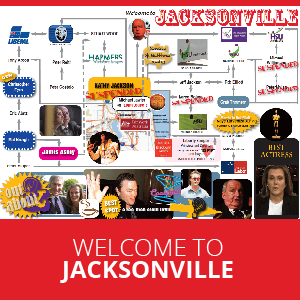Good web design plays a crucial role in improving a website’s search engine optimisation (SEO). It enhances the user experience, making the site easier to navigate, faster to load, and visually appealing, which helps retain visitors and lowers bounce rates.
These factors contribute directly to better search engine rankings, as search engines prioritise websites that offer both quality content and seamless user experiences.
A well-designed website incorporates responsive design, clear navigation, and optimised content, all of which align with SEO best practices. This integration ensures that search engines can efficiently index the site while delivering relevant results to users. Without good web design, even the best content can remain hidden from potential visitors or fail to engage them effectively.
By focusing on the intersection of design and SEO, businesses can boost their online visibility and improve their site’s overall performance. The combination of technical optimisation and user-centred design provides a solid foundation for achieving long-term success in search rankings.
How good web design impacts SEO
Effective web design shapes how search engines evaluate and rank a website. It influences several technical and user-focused factors that improve a site's visibility and performance in search results. Key elements include how easily search engines crawl and index pages, how the site performs on mobile devices, and how quickly it loads. All of these things are taken into account when an SEO company optimises your website.
Search engine crawling and indexing
Good web design ensures a clean and logical site structure. Clear navigation, simple URL schemes, and well-organised internal linking help search engines discover and understand content efficiently.
Using semantic HTML tags like headings (H1, H2) enhances content hierarchy, making it easier for crawlers to prioritise important information. Minimising duplicate content and avoiding excessive JavaScript or Flash elements prevents indexing issues.
Websites with straightforward architectures allow search engines to index all relevant pages faster. They also reduce crawl budget waste by eliminating broken links and orphaned pages.
Mobile responsiveness for SEO
Mobile responsiveness is critical for SEO since search engines prioritise mobile-first indexing. A site that adapts seamlessly to different screen sizes provides a better user experience and ranks higher on search engine results pages (SERPs).
Responsive design ensures all content, images, and navigation elements adjust without requiring zoom or horizontal scrolling. Avoiding mobile-specific errors like slow loading or inaccessible menus is essential.
Search engines favour websites that maintain consistent performance and usability across devices. Mobile-friendly sites reduce bounce rates, increase session duration, and improve user engagement signals influencing rankings.
Website speed and SEO performance
Website speed directly affects user experience and search rankings. Faster-loading pages reduce bounce rates and increase the time visitors spend on a site.
Optimising images, leveraging browser caching, and minimising HTTP requests are key strategies for improving load times. Clean code and efficient server performance also contribute.
Search engines factor in page speed as part of their ranking algorithms. A delay of even a few seconds can hurt visibility, making speed optimisation vital for SEO effectiveness.
User experience and search rankings
Effective user experience directly influences how search engines rank a website, and would be taken into account by your SEO agency when optimising your site. Factors like navigation clarity, user retention, and accessibility contribute to how search engines interpret site quality. These aspects encourage longer visits and easier content discovery, both valued by ranking algorithms.
Navigation structure and findability
A clear navigation structure helps users locate information efficiently. Well-organised menus and logical page hierarchies ensure visitors can move through the site without confusion. This reduces frustration and increases engagement.
Search engines use navigation cues to understand the relationship between pages. Properly labelled menus and internal links help distribute link equity and improve indexing. Websites with intuitive navigation tend to have higher crawl rates and better search visibility.
Important elements include:
- consistent menu placement;
- descriptive link text; and
- hierarchical page organisation.
These practices support both users and search engines, enhancing overall findability.
Reducing bounce rate with intuitive design
Intuitive design keeps visitors engaged by fulfilling their needs quickly. Simple layouts, fast loading times, and clear calls to action decrease bounce rates. A lower bounce rate signals search engines that the content is relevant and valuable.
Websites designed around user behaviour—such as predictable navigation patterns and straightforward interactions—encourage exploration. This increases dwell time, another positive factor for SEO.
Key actions to reduce bounce rate:
- minimise clutter and distractions;
- ensure mobile responsiveness; and
- use clear headings and concise content.
These contribute to smoother user journeys and improved search rankings.
Accessibility and SEO benefits
Accessible design allows all users, including those with disabilities, to navigate and consume content easily. Features like keyboard navigation, alt text for images, and readable fonts benefit users and search engines alike.
Search engines favour accessible websites because they are easier to crawl and understand. Accessibility practices often overlap with SEO best practices, such as optimised images and semantic HTML tags.
Essential accessibility elements include:
- Alt attributes for images;
- proper use of ARIA labels; and
- sufficient colour contrast.
Implementing accessibility not only broadens audience reach but also enhances SEO performance.
Visual elements that influence SEO
Visual elements affect several aspects of SEO, including page speed, user engagement, and trustworthiness. Proper handling of images, typography, and branding plays a vital role in enhancing search engine visibility and improving user experience.
Optimising images for search engines
Images must be optimised to reduce load times, which directly impacts SEO rankings. Compressing images without losing quality helps pages load faster, improving both user experience and search engine crawling efficiency.
Using descriptive, keyword-rich alt text supports accessibility, allowing search engines to understand image content. Proper file naming conventions also aid SEO by signalling relevance to search queries.
Responsive images that adjust to different screen sizes improve mobile performance, a key ranking factor. Additionally, implementing formats like WebP reduces file size compared to traditional JPEG or PNG.
Typography and readability
Typography affects how easily users consume content. Clear, legible fonts improve readability, reducing bounce rates and increasing time spent on a page, which are positive signals for SEO.
Font size and line spacing should be optimised for different devices to enhance user experience. Avoiding overly decorative or complex fonts ensures text remains accessible to all users.
Consistent use of headings (H1, H2, H3) structured around clear hierarchy helps search engines interpret the page layout and content priority. This assists in better indexing and ranking.
Consistent branding and trustworthiness
Visual consistency enhances brand recognition and user trust. When design elements such as colour schemes, logos, and layout styles are uniform, visitors are more likely to view the site as credible.
Trustworthiness influences user engagement metrics that search engines consider, such as return visits and lower bounce rates. A professional, cohesive appearance supports credibility in the eyes of both users and search engines.
Incorporating familiar visual cues and clear calls to action reassures users, encouraging interaction and extended site visits, which can indirectly support SEO performance.
Choosing a web design company with SEO experience
Selecting a web design company with SEO expertise is crucial for building a website that performs well on search engines. A firm that understands SEO integrates optimisation from the start, rather than treating it as an afterthought.
They ensure technical elements like site speed, mobile responsiveness, and clean code are prioritised. This creates a solid foundation for search engines to crawl and index the site effectively.
Look for a company that offers content strategies aligned with SEO goals. These agencies often recommend a content calendar driven by keyword research to keep the website relevant and competitive.
Transparency about their SEO practices is another important factor. A reliable company should explain their methods clearly and provide measurable results.
Choosing a company without SEO knowledge risks a website that looks good but performs poorly in search rankings. Businesses benefit most when design and SEO goals are aligned from the start.










